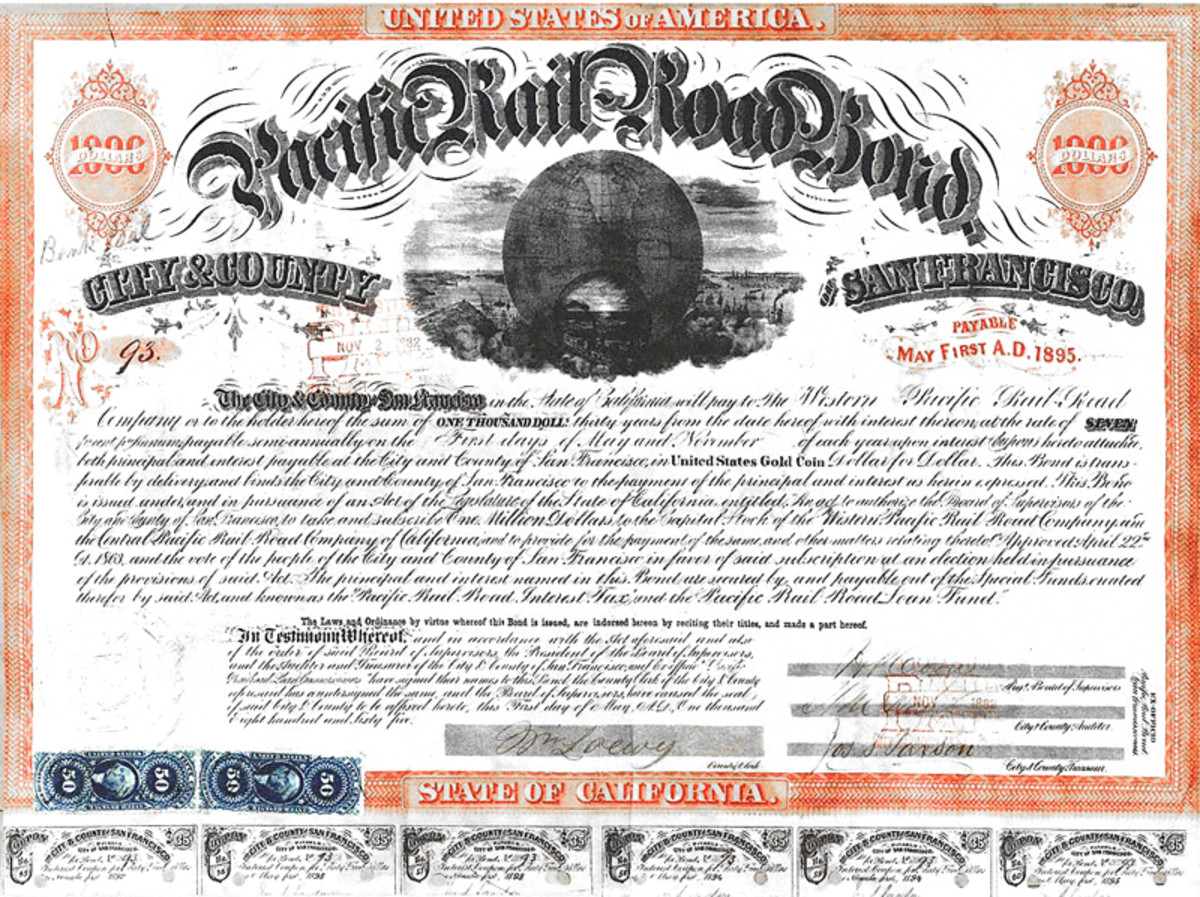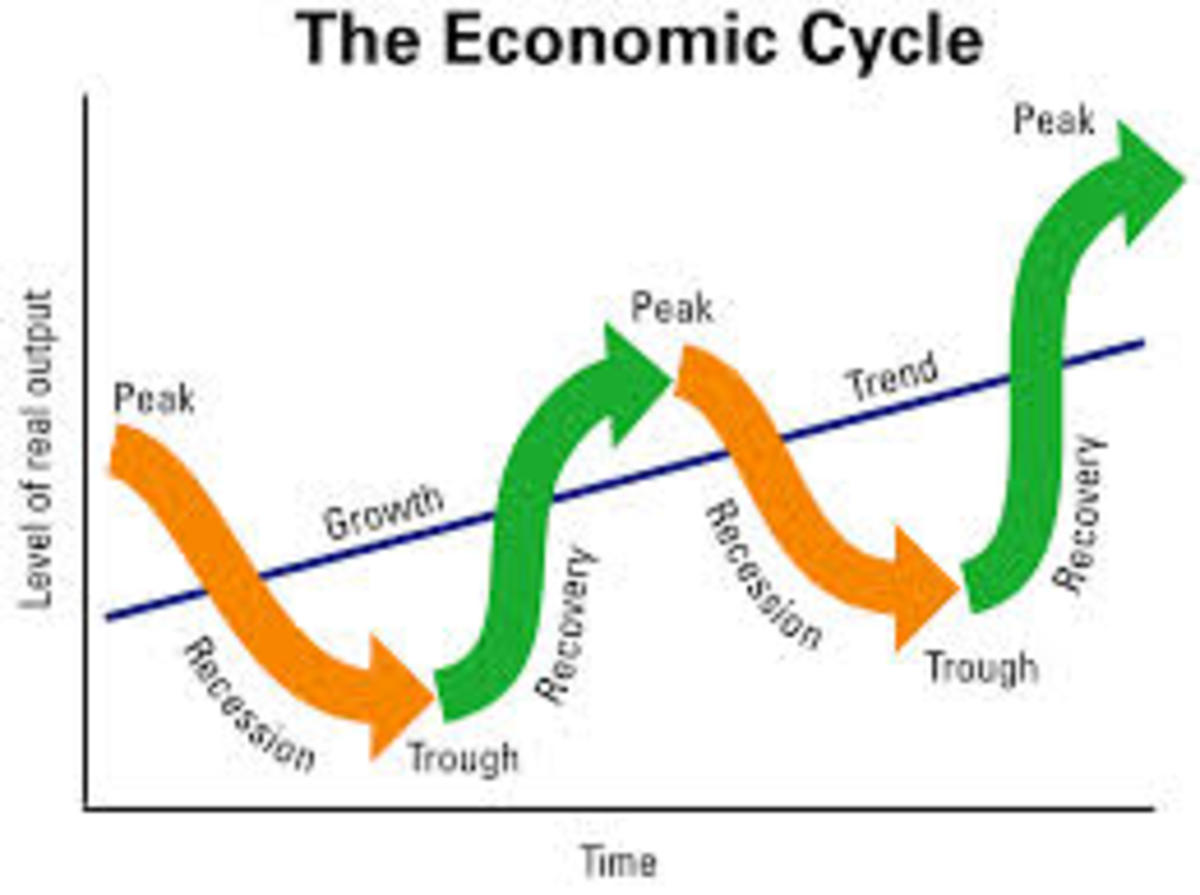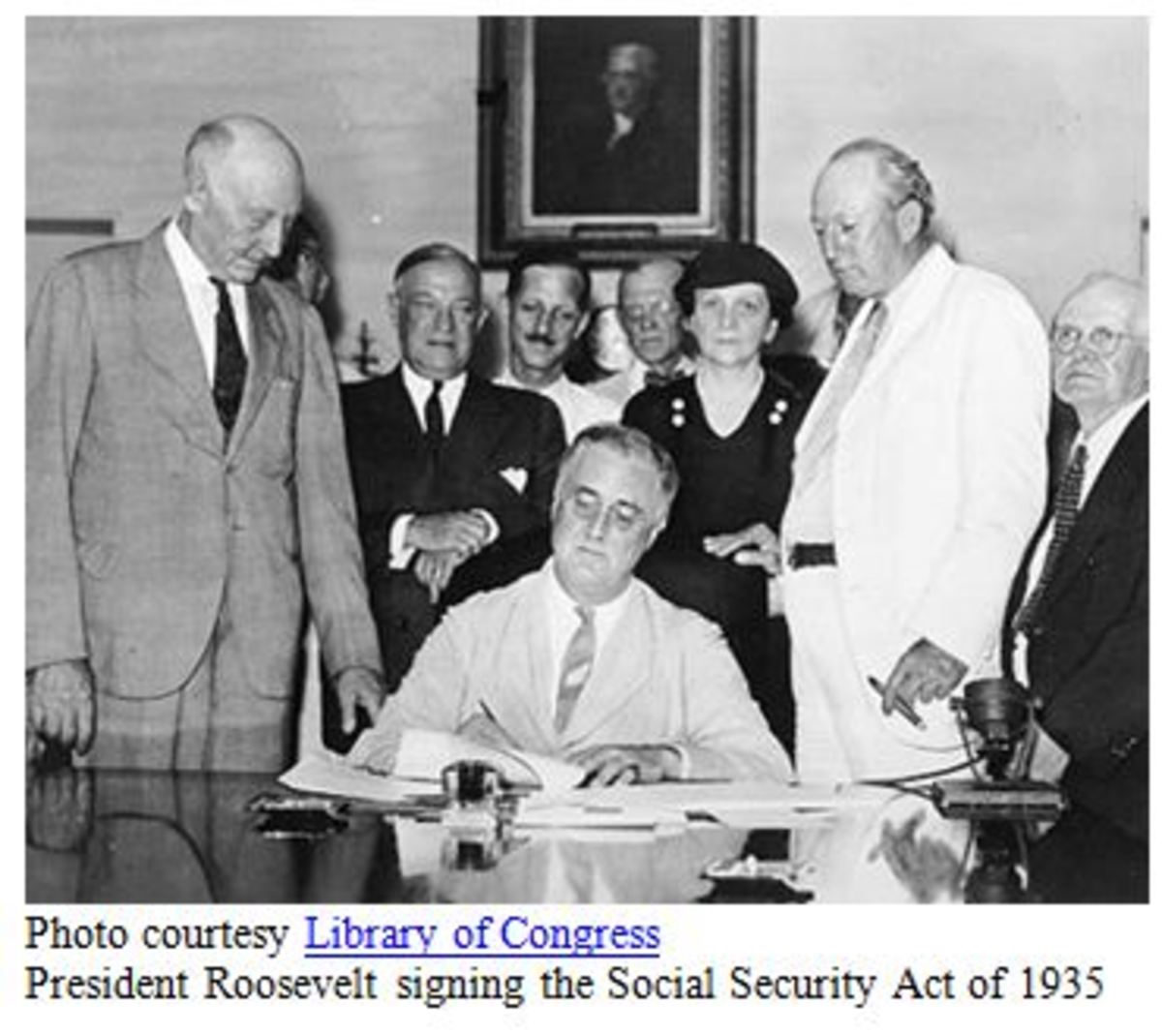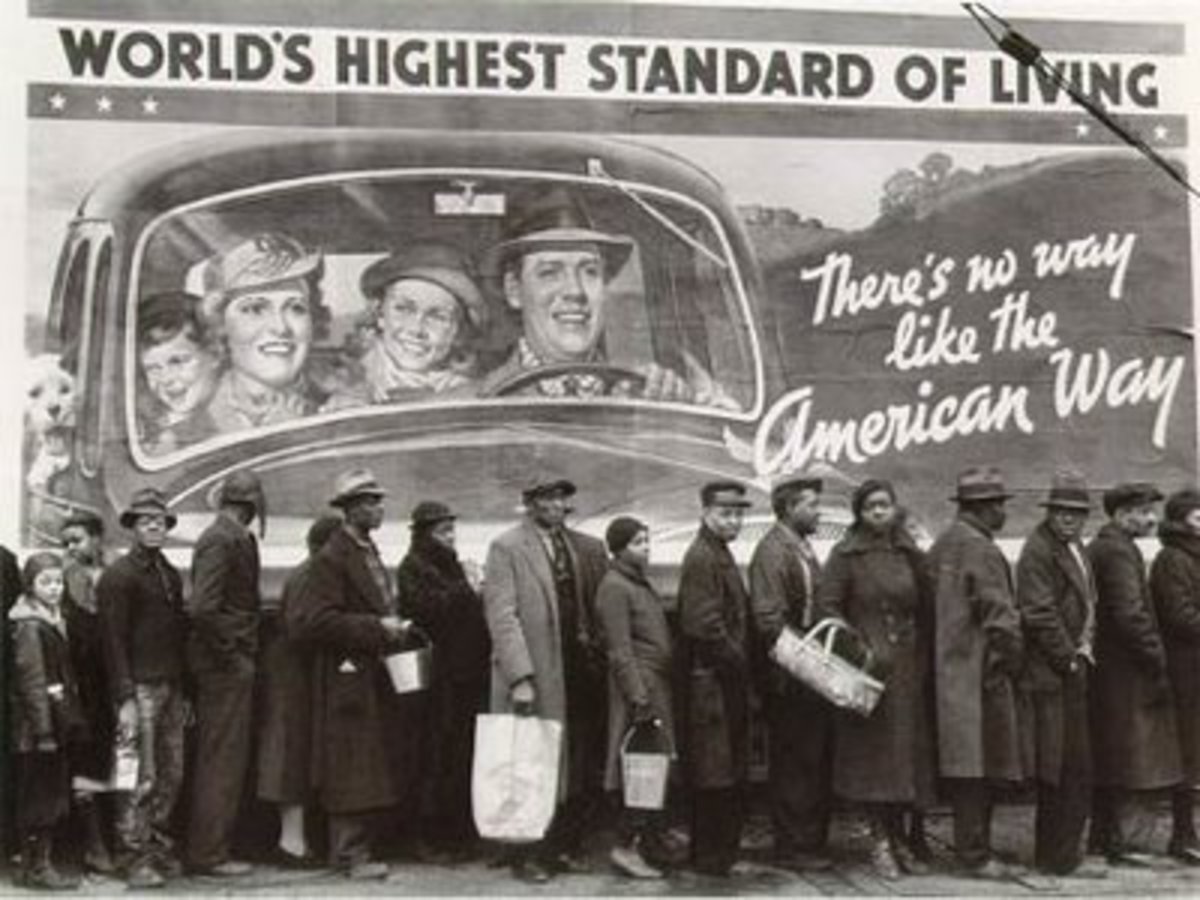If Capital One’s acquisition of ING hinges on public benefit, by all means lawmakers should say “NO!”
RUSH TO PRINT, OCTOBER 5 DEADLINE FOR PUBLIC INPUT: ADDITIONAL INFORMATION AND EDITING FORTHCOMING!
Capital One has made its objective clear that it intends to use the deposits of account holders of ING to leverage itself to purchase HSBC’s $30B credit card portfolio [1] allowing Capital One to grow into the fifth-largest bank and forth-largest lender of credit card products. Capital One claims that the acquisition of ING does not violate the terms of the Dodd-Frank Act [2] (summary [3]) in that it is not a “systemically important” financial institution – I will stand up and scream, “YES IT IS!”
“Some analysts have said that the ING Direct acquisition will make Capital One sounder because it will provide Capital One a more stable source of financing for its lending activities than borrowing in the short-term lending market.” [4] The “short-term lending market” is the Federal Reserve’s (taxpayers) “central bank” that has been lending to financial institutions at rates of 0-0.25% since 2008 [5] and Capital One has been loaning to the consumers of its products in excess of 15% over the Wall Street Journal’s Prime Interest Rate [6] of 3.25% (meaning 18.25% or more). Add to that the interchange (or “swipe”) [7] fees of 1% to 3% charged to merchants for allowing them to use Visa and MasterCard and Capital One is earning 19% to 20% on every dollar borrowed from the short-term central bank.
Allowing Capital One to use money from depositors shifts the burden of loss from Capital One’s ability to borrow from the Federal Reserve based upon its balance sheet onto the taxpayers (under FDIC insurance) and onto the unsuspecting account holders of ING’s retirement plans and annuities (which are not federally insured) should Capital One reach a point of financial loss unsustainable for deposits held within customer accounts. Since 75% of Capital One’s profits are derived from its credit card portfolio [8], there are no underlying recoverable assets should borrowers default on their unsecured credit obligations to Capital One thereby causing losses to both taxpayers and wiping out the retirement savings of millions of depositors.
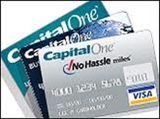
BACKGROUND
Capital One first gained market share by lending to subprime borrowers and students. “‘The genius of Morris and Fairbank was to burrow deep into the spending habits and lifestyles of these so-called prime customers to find the better bets, then offer them various rates based on their various risks,’ remarked Bernard Condon in an article for Forbes in April 2001.”[9] Capital One preyed on subprime borrowers from the beginning and advertised to them with most notably the “What’s in your wallet?” campaign. In the current economy, many consumers now have a flawed credit history due to layoffs, underemployment, and foreclosures; deeming them “subprime.” With a new sector of “subprime” borrowers, Capital One is poised to prey again. Offering high interest rates on subprime credit products decreases the available cash consumers have to spend to stimulate the economy and depletes the personal wealth of its consumers. If the past is any indication of the future, lawmakers should take note.
TIMELINE
July 2002, the Federal Reserve and the Office of Thrift Supervision took informal action against Capital One regarding the company’s infrastructure. “Capital One agreed to add to its loan-loss reserves and change the way it reported revenue on uncollectible finance charges and fees. … Capital One revealed that the subprime segment of its credit card accounts was larger than previously understood.”[10]
2003, Capital One Spent $900,000 lobbying.[11]
2004, Capital One Spent $616,000 lobbying.[12]
October 2005, Congress releases “Bush Tax Cuts” (part dealing with derivative income being taxed at 15% (verses income taxed at 35%) and acquisitions being tax free) set to expire 2010 – extended by Obama and set to expire in 2011.[13]
November 2005, acquires Hibernia National Bank of New Orleans for $4.9 billion.
2005, Capital One Spent $990,000 lobbying. [14]
December 2006, acquires North Fork Bank for $13.2 billion.
2006, Capital One spent $1,020,000 lobbying. [15]
2006, Capital One CEO Richard Fairbank (is this a pseudonym? “Rich Fair Bank”) receives a one-year total compensation [16] package worth $249.42M bringing his 5-year aggregate total to $448.58M between 2001-2006. [17] Fairbank is the highest paid CEO for 2006.
June 2007, cuts 2,000 jobs with Fairbank stating, “"Disciplined expense management is essential to maintaining and enhancing a strong competitive position in each of our businesses. Additionally, improved operating efficiency will help us drive sustained earnings growth, especially as we navigate the current interest rate cycle and normalizing consumer credit trends." [18]
2007-2008, Campaign contributions of $700K and lobbying expenditures in 2008 of $1.1M nets Capital One $3.6B in TARP payments (a 193,944% return on investment). [19]
2007, SEC filing – Item 8 on financial statements reporting net income of $4.19B, with 1.9B common stock offered, 5.2B vested stock exercised. [20]
November 2008, Capital One received $3.6B in TARP funds.
December 2008, Capital One announces its intentions of acquiring Chevy Chase Bank.
2008, SEC 10-Q filing –Item 8 on financial statements reporting $3M of stockholders’ equity (none reported for 2007) with net loss of $1.5B, with 1.9B common stock offered, 5.2B vested stock exercised.
February 2009, Capital One merger with Chevy Chase Bank completed (presumably to gain access to its lucrative customer deposit accounts).
February 2009, Renegotiation of CEO pay structure banning Fairbank from cashing out equity awards while the federal government owns a stake in the company” [21] but granting him stock options at 200% of value for $18.28 per share [22] that would later net him a cool $16.3M [23] in profit. A portion of the option awards were based on funds acquired under TARP.
April/May 2009, First wave of “repricing” customer accounts, often up to 10% above agreed upon rates – even on existing balances, for accounts with fixed rates opened longer than 3 years, and variable rate cards opened longer than 2 years (discussed in detail below).
June 2009, Capital One repays $3.6B TARP [24] (presumably to avoid Federal Regulations and scrutiny regarding executive compensation).
Undated 2009, Capital One under investigation for TARP executive compensation. [25]
2009, Capital One reports an increased profit of $880M from 2008 filing. [26]
January 2010, Second wave of “repricing” customer accounts, often up to 10% above agreed upon rates – even on existing balances, for accounts with fixed rates opened less than 3 years, and variable rate cards opened less than 2 years (discussed in detail below).
February 2010, CARD Act legislation goes into effect.
2010, Richard Fairbank’s total compensation reportedly equals $14.9M with a total accumulated wealth received from Capital One in stock options and exercised stock options of $143.6M. [27]
September 15, 2011, Capital One taps Witter and Slocum as executive president splitting role of Lynn Carter. [28]
December 15, 2012, SEC K-8 filing regarding 10,875 owner derivative stock of Witter and 7,995 derivative stock of Slocum [29] due to expire with a 20-day preceding average range for “market value” pricing of stock.
February 15, 2012, SEC K-8 filing regarding 50,346 owner derivative stock of Witter and 7,995 derivative stock options [30] due to expire with a 20-day preceding average range for “market value” pricing of stock.
March 15, 2012, SEC K-8 filing regarding 12,514 owner derivative stock of Slocum due to expire with a 20-day preceding average range for “market value” pricing of stock. [31]
October 2011, “Bush Tax Cuts” with 2011 moratorium signed by Obama in 2010 (section relating to derivate payments taxed at 15% and acquisitions tax-free) set to expire. [32]
Customer Interest Rate Hike
In 2008, Capital One knew prior to the passing of the CARD Act [33] legislation that its ability to “reprice” interest rates for existing customers would most likely be limited. Acting with complete malevolence, the company moved forward and “repriced” all customer accounts beginning in early 2009 EXCEPT those of the “rich” (account balances greater than $50,000), the “politically powerful” (Metropolitan Washington, D.C. assuring exclusion of legislative regulators and congressional staffers), and the “big spenders” (those who charged more than $30,000 per year). [34]
“A Capital One spokeswoman said: ‘The economic environment has changed dramatically and we must adjust rates to account appropriately for the increased risk of lending to consumers in an economic downturn.’” [35]
Due to interest rate “repricing” starting in May 2009 and again in January 2010, Capital One has claimed $880M in additional profits the first year (and during the height of economic crisis - knowing that they almost ensured that customers would not be able to finance out of their products and some would default) (see Quarterly SEC [36] 10-K filings during the years of 2007-present [note rapidly increasing profits beginning 2009]). See, also, “The Hidden Danger of Carrying Revolving Debt on Variable Rate Credit Cards” [37] for a simplified explanation of revolving debt on credit cards). Capital One also reported an 85% increased profit margin in the first quarter of 2011. [38]
Capital One took advantage of the economic environment at the height of the recession to “reprice” accounts up to 10% above their then current rate. The company moved to immediately implement the “repricing” scheme, charging the higher interest rate even on borrowers whose accounts were in good standing and applied those new rates even to existing balances just prior to the CARD Act legislation being passed and prior to any provisions of that legislation taking effect in February 2010. [39] For every $1,000 borrowed, an interest rate of 10% costs an additional $53.20 in interest charges to pay off the balance at a fixed payment of $100 a month. [40] Annualized charge off for delinquencies rates have risen to 6.1% as of September 2011. [41]
While Capital One claimed these exorbitant profits, they also increased their lobbying expenditures to $1.9M in 2009 [42] and $1.7M in 2010. [43] Capital One’s political campaign contributions of $3.52M since 1999 ($1.378M of which was contributed between 2008-2010) favor Republicans with the most contributions ever being contributed to a single recipient, Eric Cantor, to the tune of $78.5K. [44] (See House and Senate Lobbyist Contribution and Disclosure Search [45] for links and instructions on how to use lobbyist disclosure and political contribution search engines).
Since the ruling in Citizens United v. Federal Election Commission [46] (Summary Discussion [47]) (which allows unlimited amounts of campaign money to be spent on political ads favoring or attacking political candidates), note Capital One’s immediate drop in disclosure of campaign contributions from 2010-2011 ($704.3K) and non-reporting for 2011-2012. [48] In the 2nd Quarter of 2011, Capital One reportedly spent $430,000 on lobbyist activity. [49]
The “public” has a right to know which lawmakers are presiding over the decision making process who have benefited from the exclusion of Capital One’s “repricing” (arguably a backdoor contribution/bribe) or of any lobbying funds directly received by Capital One. Any such lawmaker advocating over whether or not to allow the merger of Capital One and ING to proceed should immediately be recused and/or lose their voting privilege concerning legislation advocating the Capital One/ING merger.
Regarding the Capital One/ING merger, John Finneran, general counsel for Capital One, told the Federal Reserve at a public hearing in Chicago that “product diversification, combined with our conservative and industry-leading underwriting capabilities, helped make us one of only two credit card businesses not to lose money in any quarter during the Great Recession." [50] Based on Capital One’s past behavior, it appears as if the company’s exploitation of its customers and the tax benefits provided to it by states in which they have a physical presence would be a better analogy. (See Tax Discussion section below).
Capital One’s website [51] offers credit cards, automobile loans, and personal loans; customer accounts include savings, money market, and certificates of deposits (all insured under FDIC). The highest rate available for a deposit account with Capital One is currently 0.85% on its savings account products with a minimum balance of $10,000. Id. The majority of Capital One’s mortgage portfolio has come from the acquisition of other lending institutions and not from origination.
“The only public benefit that can outweigh this kind of increase in systematic risk is a forward commitment to do those things that generate wealth for Americans,” John Taylor, chief executive officer of the National Community Reinvestment Coalition, [52] told the Federal Reserve.[53] Going further, Taylor said Capital One must offer a “meaningful plan showing a true commitment to do more for the public.” Id.
How about rolling back that 10% interest rate hike for starters?
Bail Out, Buy Out, Pay Out
After taking $3.56B in TARP funds in November 2008, Capital One announced on December 4, 2008 that it was purchasing Chevy Chase Bank for $520M. [54] The acquisition was finalized on February 27, 2009. “Capital One has pursued a strategy in recent years of buying regional banks to get access to their deposits, which the company uses as a cheap source of funding for its credit card operations.” Id. In February 2009, Capital One amended its compensation agreement with CEO Richard Fairbank “banning him from cashing out equity awards while the federal government owns a stake in the company” [55] but granting him stock options at $18.28 per share exercisable at 200% of market value that would later net him a cool $16.3M [56] in personal profit . In June 2009, Capital One announced that it would be repaying TARP funds [57] in what was presumed to be an attempt to “escape strict government restrictions, such as limits on executive compensation.” [58]
___________________________
I apologize for the abrupt ending – this article was growing into a book. Instead of continuing with the mini-discussions, I broke them into topics. Please see the list of spin-off articles and continue from here. I will summarize the information in this Hub and re-post.
___________________________
For related topics, please see the author’s other HubPages articles.
___________________________
If you've found this information to be useful, I would appreciate your “like-ing” on Facebook, “Twitter-ing” the link, “+1-ing” on Google, “follow-ing” the writer for spinoff discussions on this topic, and leaving your comments below – most importantly, please click on some advertiser links (as that is what pays for HubPages' website to have provided the forum to distribute this information to you for free). Thank you!
DISCLAIMER: The information on this page is provided by a freelance consumer advocate who has not solicited the opinions of the HubPages directors. HubPages only provides the platform to make this information easily available to users of the internet. The information on this page is the copyrighted intellectual property of Perry Fender and the opinions expressed are solely those of the author.
_____________________________
SEE www.PerryFender.com for a full list of citations without redactions. Threshold for citations to some sources unwittingly violated HubPages Terms of Service.
[1] http://dealbook.nytimes.com/2011/08/23/in-feds-move-on-capital-one-deal-a-test-of-dodd-frank/
[2] http://sec.gov/about/laws/wallstreetreform-cpa.pdf
[3]http://banking.senate.gov/public/_files/070110_Dodd_Frank_Wall_Street_Reform_comprehensive_summary_Final.pdf
[4] Cited at fn. 1
[5] http://www.federalreserve.gov/monetarypolicy/openmarket.htm
[6] http://www.wsjprimerate.us/wall_street_journal_prime_rate_history.htm
[7] http://money.usnews.com/money/blogs/my-money/2011/07/12/what-the-durbin-amendment-means-for-you
[8] http://www.washingtonpost.com/blogs/capital-business/post/capital-ones-business-model-not-sound-community-groups-tell-fed/2011/09/20/gIQADkzGiK_blog.html
[9] http://www.answers.com/topic/capital-one-financial-corp
[10] Cited at fn. 9
[11] http://www.opensecrets.org/lobby/firmsum.php?id=D000021891&year=2003
[12] Variation of fn. 11, change year.
[13] http://www.cbo.gov/ftpdocs/67xx/doc6792/10-18-Tax.pdf
[14] Variation of fn. 11, change year.
[15] Variation of fn. 11, change year.
[16] http://www.forbes.com/lists/2006/12/8YTB.html
[17] http://insiders.morningstar.com/trading/executive-compensation.action?t=COF®ion=USA&culture=en_US
[18] http://www.washingtonpost.com/wp-dyn/content/article/2007/06/27/AR2007062702409.html
[19] http://www.opensecrets.org/news/2009/02/tarp-recipients-paid-out-114-m.html
[20] SEC website sourced too many times for HubPages threshold. See author’s website at www.PerryFender.com for full list of un-redacted citations.
[21] http://www.thestreet.com/print/story/10461655.html
[22] Cited at fn. 21.
[23] http://abcnews.go.com/Business/ceo-compensation-soars-wall-street-gains/story?id=8462841
[24] http://www.bloomberg.com/apps/news?pid=newsarchive&sid=aqKzeC4W0dZU
[25] http://shareholdersfoundation.com/caseinvestigation/capital-one-financial-corp-under-investor-investigation-over-alleged-excessive-pay
[26] SEC website sourced too many times for HubPages threshold. See author’s website at fn. 20 for full list of un-redacted citations.
[27] http://www.equilar.com/ceo-compensation/2011/capital_one_financial_richard_d._fairbank.php
[28] http://www.americanbanker.com/people/capital-one-slocum-witter-1042240-1.html
[29] SEC website sourced too many times for HubPages threshold. See author’s website at fn. 20 for full list of un-redacted citations.
[30] SEC website sourced too many times for HubPages threshold. See author’s website at fn. 20 for full list of un-redacted citations.
[31] SEC website sourced too many times for HubPages threshold. See author’s website at fn. 20 for full list of un-redacted citations.
[32] http://www.cbo.gov/ftpdocs/67xx/doc6792/10-18-Tax.pdf
[33] http://www.whitehouse.gov/the_press_office/Fact-Sheet-Reforms-to-Protect-American-Credit-Card-Holders/
[34] Plaintiffs’ Statement Of Additional Undisputed Material Facts In Opposition To Defendant’s Motion For Summary Judgment (Docket Entry 55), In re: Capital One Credit Card Interest Rate Litigation, Case No. 1:10-MD-2171-JOF (U.S. Dist. Ct. N.D. Ga.), referencing Exhibit 2, Deposition of Capital One 30(B)(6) Representative (Unavailable) at pp. 61:14-19, 274:12-14, 64:19-67:7(a “pay for” source through PACER – See http://perryfender.hubpages.com/hub/PACER-Public-Access-to-Court-Electronic-Records on how to obtain a copy).
[35] http://www.timesonline.co.uk/tol/money/borrowing/article7019522.ece
[36] SEC website sourced too many times for HubPages threshold. See author’s website at fn. 20 for full list of un-redacted citations.
[37] Author’s HubPages article entitled, “The Hidden Danger of Carrying Revolving Debt on Variable Rate Credit Cards”
[38] http://www.cbsnews.com/stories/2011/01/20/business/main7266590.shtml
[39] http://www.foxbusiness.com/story/personal-finance/credit-card-companies-raising-rates-consumers/
[40] http://www.savvy-discounts.com/calculate/credit_card/credit_card_compare.html
[41] SEC website sourced too many times for HubPages threshold. See author’s website at fn. 20 for full list of un-redacted citations.
[42] Variation of fn. 11. See author’s website at fn. 20 for a full list of un-redacted list of citations.
[43] Variation of fn. 11. See author’s website at fn. 20 for a full list of un-redacted list of citations.
[44] http://influenceexplorer.com/organization/capital-one-financial/78530e03ddd14981a99c383bdfde59ec?cycle=-1
[45] Author’s HubPages article entitled, “House and Senate Lobbyist Contribution and Disclosure Search.”
[46] http://www.supremecourt.gov/opinions/09pdf/08-205.pdf
[47] http://www.csmonitor.com/USA/Justice/2010/0202/Supreme-Court-s-campaign-finance-ruling-just-the-facts
[48] http://influenceexplorer.com/organization/capital-one-financial/78530e03ddd14981a99c383bdfde59ec?cycle=2012
[49] http://www.businessweek.com/ap/financialnews/D9Q11BBG0.htm
[50] http://www.reuters.com/article/2011/09/27/us-capitalone-hearing-idUSTRE78Q53B20110927
[51] https://www.capitalone.com/
[52] http://www.ncrc.org/
[53] http://www.bloomberg.com/news/2011-09-20/capital-one-ing-deal-should-hinge-on-public-benefit-group-says.html
[54] http://www.washingtonpost.com/wp-dyn/content/article/2008/12/03/AR2008120302809.html
[55] Cited at fn. 21.
[56] http://abcnews.go.com/Business/ceo-compensation-soars-wall-street-gains/story?id=8462841
[57] http://phx.corporate-ir.net/phoenix.zhtml?c=70667&p=irol-newsArticle&ID=1297663&highlight=
[58] http://www.pbs.org/newshour/updates/business/jan-june09/tarppayback_06-09.html



